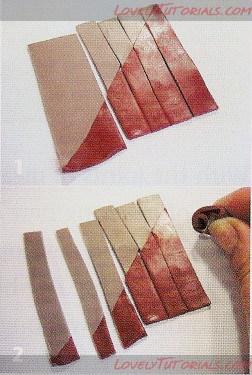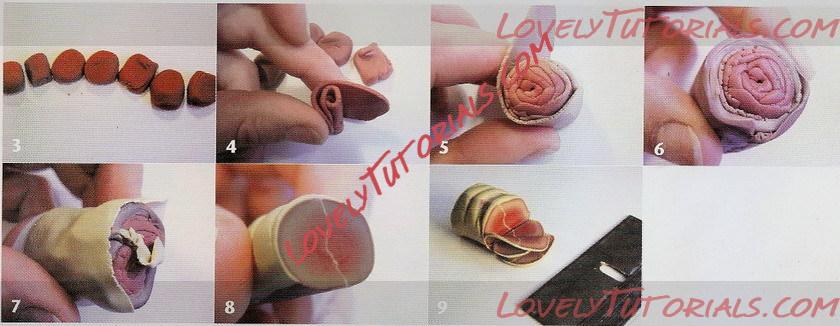Огромная благодарность Автору за Мастер-класс


To ensure you get your colours blended gradually through from the rare, pink middle to the well-roasted brown of the beef, this method uses a similar approach as we will see used frequently throughout the book, called the Skinner shade technique. This is a very simple method, requires the minimum of equipment and materials, and is both quick and effective.
1 Roll out your two colours and cut them into two triangles of equal proportion. Position the diagonal edges of the triangles of clay together to form a rectangle. Cut into several strips of approximately equal size.
2 and 3 Mix the clay from each strip ensuring you keep the strips in order, and then form them into rolls of increasingly darker tone.
4 and 5 Roll out each strip. Take the first which should -represent the rare part of the beef, the centre of the beef joint, and curl it into a tight roll. Add progressively more 'well-cooked' layers of strips of clay to the outside, until you have a complete, many layered roll of meat.
6 You don't need to worry about whether each strip meets neatly in the middle, just carry on rolling until you have used all of the clay.
7 Cut into the side of the
roll and tear it in half. Add a strip of fat using the technique for the raw beef project.Rejoin the halves of loll and cover half of the whole with a layer of fat.
8 Lengthen the roll and mark with string marks as for the raw beef, but remove the piece of string.
9 Cut the beef cane into pieces about l.5cm long. For an authentic look, slice the ends and curl over into a slice of beef, before hardening in the oven.